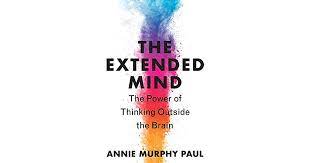I can’t remember, to be honest, how this book ended up on my shelf. When it came to the top of the pile for me to read, I’d be lying if I didn’t tell you that I wasn’t that excited about it. The description about getting outside of your head and using your surroundings, your body, and your relationships to think deeper seemed, for lack of a better term, like some voodoo, new age, spaceship Jesus, bullshit. After reading it, though, I am on board the spaceship headed to a new age of how I will tackle difficult problems in the future.
TL;DR Version
- This is a great book if you have an interest in how people (including you) learn and can leverage the things already in your life to learn more.
- If you are an educator of any kind, this is a must read.
- If you are a parent, especially of a child who has difficulty with learning, this is a should read.
- Get out of your head.
The basic lesson from this book, in incredibly simplified form is: Get Out of Your Head.
What form the getting out of your head takes is, of course, dependent on you, the subject you are studying or problem you are solving, and your environment. In the book, the author does a wonderful job of applying real studies and examples to illustrate her point of how by utilizing your body, your environment, and your groups, you can become better at problem solving, learning, discovery, and, ultimately, I thought, connecting.
As someone who is a visual person, this book really reinforced how I currently conduct myself when I am writing, workflow developing, and checklist creating. Moreover, it gave me a better framework for how to do that in the future to take full advantage of what is in my head, combined with what isn’t. I briefly, and unknowingly, described that process in this post about why I write. Writing allows me to take what is in my head and get it out into something tangible that I can then mold and move and change and get input on and lather, rinse, repeat.
What could have been a very dry thesis on how the things around us affect how we cognitively behave (dry like this sentence), was an enjoyable read. I found myself intrigued by, and later reading them aloud to my wife (actually trickily related to the point of the book), some of the studies illustrated. Like many things we are discovering about the mind, some of the old, outdated models for thinking are in need of a refresh. This book shows you how. I definitely recommend it.
Subscribe and get posts delivered directly to your inbox.

